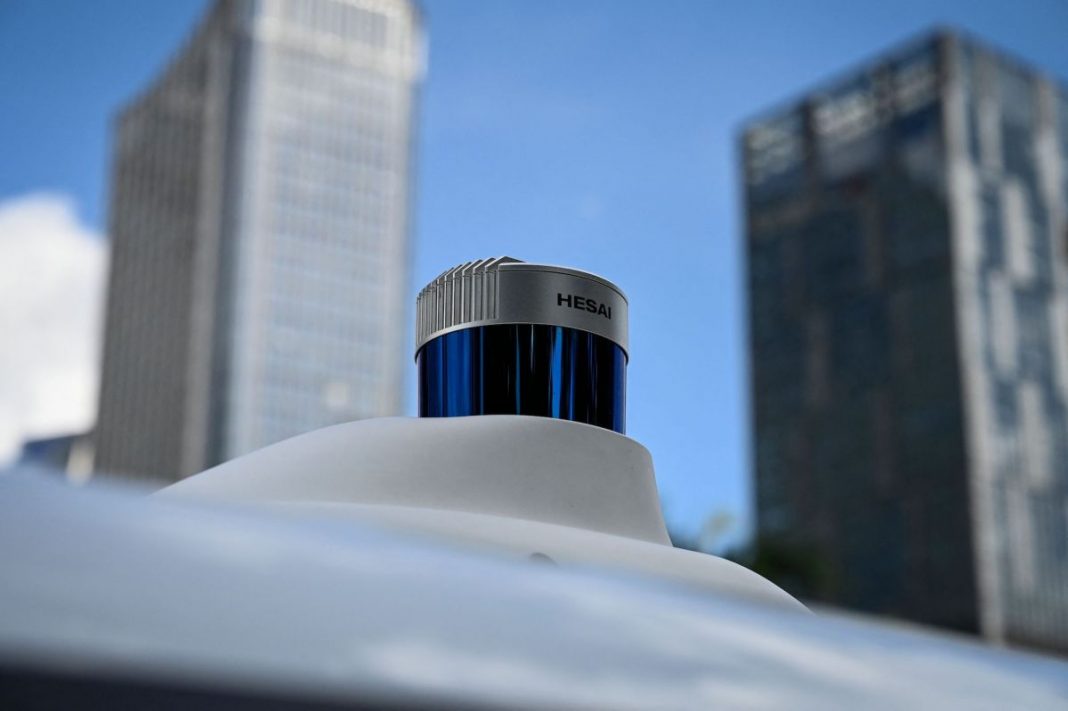Last week, China’s lidar maker Hesai raised an upsized IPO in the U.S. at a time the industry is reeling from layoffs, bankruptcy, and consolidation. The Shanghai- and California- based company, which makes the sensing technology critical to autonomous driving and increasingly advanced driver assistant systems, raised $190 million from its public offering on Nasdaq.
As my colleague Kirsten wrote in January, lidar makers are facing a “make or break” year as they enter 2023. The handful of players that sought special-purpose acquisition mergers hasn’t received the scale of capital promised. Of the nine lidar firms that went public through SPAC, Quanergy filed for bankruptcy protection and Ouster merged with Velodyne. Ouster’s shares have been trading under $2 since last June, and Innoviz shares are around $4 apiece.
Founded in 2013, Hesai originally intended to go public two years ago. Its application to list on China’s Nasdaq-style STAR board was approved in January 2021 when it planned to raise over 200 million yuan ($30 million) at a 10 billion yuan valuation. But the IPO plan was withdrawn two months later.
Hesai forged ahead with a U.S. IPO amid industry gloominess. Defying worries, its shares jump nearly 11% to $21 on their first day of trading last Thursday. Its flotation also marked the biggest Chinese IPO in the U.S. since Didi’s in 2021, which subsequently triggered China’s clampdown on overseas listings over data security concerns.
A rank of Chinese tech companies has delisted from the U.S. or sought secondary listings in Hong Kong as they get caught in rising tensions between the two major economies. Hesai is not immune from the impact of geopolitics. Despite its rosy IPO, the firm is facing roadblocks ahead as it laid out in its IPO prospectus. The document is also a helpful lens to understand the state of China’s lidar industry and how it gets caught between two superpowers.
Caught in the middle
For Hesai, the challenges of operating amid a U.S.-China tech war manifest evidently in its supply chain stability. Last year, the U.S. government introduced a fresh round of export restrictions on high-end chip sales to China. “These sanctions and export controls could adversely affect us and/or our supply chain, business partners, or customers,” Hesai warned in the prospectus.
While Hesai is working on its own application-specific integrated circuits, the development of its in-house ASICS is “early” and the firm remains “dependent on third-party chips” for its lidar products.
A global chip shortage, which has hit industries from auto to consumer electronics, further aggravates the lidar maker’s supply chain troubles. “We have experienced difficulty in securing sufficient and prompt chip supplies, including automotive grade receivers and FPGA (field-programmable gate array) chips, due to the ongoing global chip shortage, and our business operation and financial performance have suffered as a result,” the company noted.
Chinese firms looking to hold international shares offerings also face new pressure from Beijing, which has been stepping up oversight of data-rich tech giants that could pose a national security threat. Didi was pressured to delist from New York after China determined it lacked a robust data security infrastructure. The government has since instituted a set of rules to rein in offshore listings, such as requiring companies to seek China’s approval if they own over one million Chinese users’ personal information. Nonetheless, Hesai said that it received a confirmation from the relevant authority that it did not need such a review for its IPO.
Customer pressure
Estimates by Frost & Sullivan suggest Hesai was the biggest lidar maker by shipment in 2022. Between 2017 and 2022, the firm shipped over 100,000 units, with 2022 alone exceeding 80,000 pieces. But sales don’t equate to profitability. The company has a track record of substantial losses — 120 million yuan ($17 million) in 2019, 107 million yuan in 2020, 245 million yuan in 2021, and 165 million yuan in the first nine months of 2022.
A few factors might explain its streak of losses. In recent years, China’s lidar manufacturers have entered a price war to make the once-exorbitant hardware more affordable for mass adoption. That, in part, is a response to the rush by the country’s electric vehicle brands to tout smart driving as a key selling point. To win orders from major automakers, lidar companies are often forced to sell at competitive prices — even at a loss.
As Hesai admits in its prospectus, “Cost-cutting initiatives adopted by our customers often result in increased downward pressure on pricing. In addition, many of our customers, particularly automotive OEMs, possess significant leverage over their suppliers, including us, because they are large multinational companies with substantial negotiating power and the automotive component supply industry is inherently highly competitive, serves a limited number of customers and has a high fixed cost base.”
It doesn’t help that Hesai’s revenues rest on “a limited number of customers and products.” The firm’s gross margin slipped from 57.5% in 2020, 53.0% in 2021 to 44% in the first nine months of 2022.
Lidar’s application goes beyond automated driving, but many players in China jumped on the EV boom as the government shelled out large subsidies to companies driving the electric transition. That means lidar makers rise but also fall with cycles in the EV space. As Hesai wrote:
“Many of our customers in China focus on the development and production of NEVs [new energy vehicles] and have been entitled to certain government incentives or subsidies… However, China’s central and local governments have begun to phase out such incentives and subsidies… The business of our Chinese NEV customers may suffer as a result, which in turn may have a material and negative impact on us as a LiDAR supplier.”
